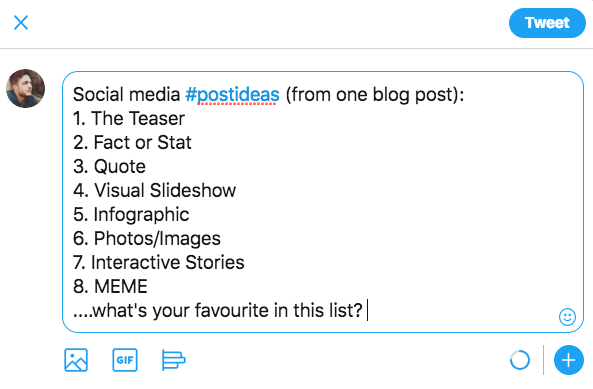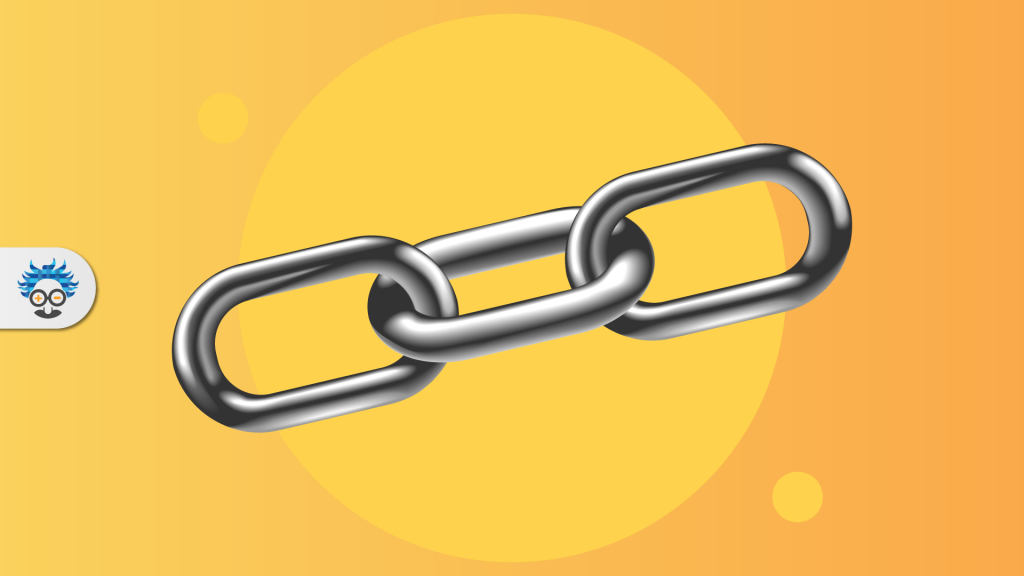Evergreen content sounds great, but what is it?
If you’re involved in digital, worked with content marketing or had a hand in a social media campaign, you’ve probably come across the term ‘evergreen content’.
In this article, I’ll be working through the what, why and how of evergreen content so you’re fully prepared to integrate it into your digital marketing campaigns.
Let’s start with a definition:
Contents
The Definition of Evergreen Content
Evergreen content is non-time-sensitive content that stays relevant and continues to provide results toward your digital aims.
For example, a guide about losing weight would be considered evergreen content, as would how to do long algebraic division.
These are both topics whose content remains relevant and helpful for a specific audience, no matter how old the content is.
If content like this is optimised to continually drive visitors, it will never stop providing results toward a brand’s digital aims.

Here are a couple of examples of evergreen content from around the web:
Instructional Videos (like this WikiHow Example)
What Evergreen Content Isn’t?
Not everything can stand the test of time, nor can every piece of content.
Even if you publish a blog, video or podcast and leave it online indefinitely, that doesn’t mean that it’s evergreen.
Evergreen content is NOT defined by its availability, its defined by its continual relevance.
Content that will be of no use to your audience in the years that follow its publication, cannot be considered evergreen.
A few examples of content that isn’t evergreen include trends, fads, breaking news and time-specific statistics.

Content like this must still play a role in your content marketing strategy, it can drive interest and traffic in the short-term, helping to build your audience.
Here are a few examples of non-evergreen content from around the web:
News Articles About Google Updates
Editor’s Letters or Diary Style Blog Posts
Why is Evergreen Content Important?
If building an online business with content was like building a house, evergreen content would be the blocks that allow that house to grow.
This is because they make returns at a fairly consistent level, no matter what’s trending or changing in your industry.
Whilst non-evergreen content might create short spikes in traffic, followers or leads, evergreen content keeps working at a fairly consistent rate, allowing you to build upon it.

The more layers of evergreen content on your website, the more traffic you’ll generate on a consistent basis.
More traffic means more awareness, more followers, more leads, and more customers – in other words, evergreen content is pretty massive.
For example, imagine if you published an evergreen blog that returned 50 extra visitors to your website every day. That would equate to 18,250 extra visitors a year.
Now imagine that you published 10 evergreen blogs like this in a year – that’s an extra 182,500 visitors!
Why is it Called ‘Evergreen’ Content?
Evergreens are plants that retain their green leaves throughout the year and are not dependent on the seasons.
Evergreen content is the content marketing equivalent of this.
How Does Evergreen Content Keep Returning?

Website traffic can be divided into a few different sources. These include visitors from:
- Social media
- Referrals
- Direct
- Search Engines
In order for your evergreen content to grow and build on your traffic, it needs to consistently generate visitors from ‘search engines’.
Evergreen content gets search visitors for free. These visitors are NOT driven by ads on social media or constant email broadcasts.
Search engines like Google allow users to search for answers, information and solutions to their information gaps – its this type of traffic that your evergreen content needs to tap into.
What Does This Mean?

If you’ve taken nothing else from this guide up to this point, make sure you understand that evergreen content is:
- Content that is always relevant
- Content that drives visitors from search engines
Now that we’ve established this as fact, let’s look at how you can tap into these points:
How to Create Content That is Always Relevant
Creating evergreen content is a fine art – it means finding a careful balance while mixing different factors.
The biggest things to think about are topic and format. Let’s look at those in a bit more detail, alongside a few extra tips.
Topic
I always create my evergreen content topics to achieve two things:
- Help an audience of a specific level to grow
- Be 100% relevant to my business aims (and content marketing strategy)
It goes without saying that in order for an audience to grow, you really need to know and understand them – make sure you’re having conversations with them as often as possible, have a customer avatar and are always researching their needs.

Put yourself in the shoes of a complete beginner – what do they need to learn? What would they search for? Where would they place their initial emphasis and research in your industry?
Then think about intermediates and ask yourself the same question. And when you’re ready, follow that by helping the experts.
Really try to understand what somebody needs to know when they’re entering your industry – even if you think it’s basic, the idea might have value for your content strategy.
Avoid fads or trends and focus on something that would’ve held true in your industry years ago, and is still just as important.

Other kinds of topics that produce evergreen returns include:
- Reviews (of products/services that aren’t often replaced/updated)
- Factual/encyclopaedic style entries (Wikipedia’s entire traffic strategy is built solely on evergreen traffic)
Format
Evergreen content tends to work better when they’re placed into one of a handful of different formats or content titles.
These include:
- How to guides, e.g. How to Get more Website Traffic
- Q & A, e.g. What is Website Traffic?
- Lists, e.g. 100 Ways to Get More Website Traffic
- Tips, e.g. An Expert’s Tips For Increased Website Traffic
These 4 formats will give your content topics a much greater opportunity to develop a consistent return in traffic.

Be aware of your topic and how you can structure it in a way to best help your visitors.
Above all else, focus on the experience of your visitors and what they take away from your content – select your format wisely.
Evergreen Content Tips
Achieving the perfect blend of topic and format is a great start, but even that can’t guarantee the evergreen results you’re craving.
These tips will help you develop content that keeps on returning:
Avoid Dates in your titles:
Dates quickly become out-dated.
Avoid using things like years, months or seasons in your content headlines, e.g. How to Lose Weight in 2017, won’t get the evergreen traffic it might deserve.

Go big or don’t bother:
If you hit on a topic that can achieve evergreen results, chances are that you aren’t alone, and even if you are the first there, it won’t be long until others notice.
Create content that outdoes everyone else’s, be the most in-depth, the clearest and answer every single question your audience might ask.
Market Your Content:
Don’t sit back and expect your content to just get results – make an effort to get the ball-rolling. Publish it on social, email your subscribers, push it into hot distribution spots and build as many inbound links to it as possible.
Scaling a Facebook campaign can completely tank your ROI (when you do it the wrong way). 😬👎
Learn the basics of scaling a FB campaign +2 effective ways that anybody can scale their campaign today 👌…https://t.co/7Yjru6vboM#Marketing #DigitalMarketing #facebookads
— Einstein Marketer (@EinsteinMktr) October 12, 2020
Refresh and Update:
Keep a close eye on your content and how it’s performing. If you ever notice that results are tailing off, simply refresh the content and update its content. This might mean adding in new sections (which will help you out-perform your competitors), linking to supporting content or freshening the format.
Write for your audience level:
If you’re writing content for beginners, make sure that you’re writing with terms and words that they’ll understand. Don’t make knowledge assumptions.
Optimise your content for Search Engines:
If search engines are where your evergreen returns are going to come from, you must prime your content towards ranking there. More on that next…

Evergreen Traffic From Search Engines
When you have a topic and a structural idea for your content and you understand the evergreen content tips, it’s time to create content that is primed for search.
You can do this with:
- On-page SEO
These are search optimised factors that you control within the content that you publish.
- Off-page SEO
These are things that you can do away from the content that you publish.
On-Page SEO
I’ve written several in-depth guides about on-page SEO, so I’m reluctant to go into too much detail here (including the most important Google ranking factors).
However, here are the biggest steps of on-page SEO to elevate your success with evergreen content:
- Keyword Research:
Great evergreen content topics are continually popular search queries. Use a tool like Keywords Everywhere (paid) to discover the average number of times a specific keyword is searched, or a tool like Answer the Public to come up with ideas.

When you have keywords that relate to your content topic, use Google Trends to measure its popularity over time. If it has performed consistently for a long time, it’s a winner.
- Use the Keyword:
After you’ve researched your keywords, you need to put them to good use. This means using them correctly within your content.
Whatever type of content you publish (written, video, audio), make sure that the keyword is included in:
- The content headline
- The meta-description (this is the text used by Google in their search results)
- Content description/intro
- The slug (this is the URL extension)
If you’re writing blogs, try to follow these additional rules as well:
- Keyword density – approximately 1-2.5% of your content should be made up of your keyword
- Don’t reuse your keyword in new blogs – when you publish blogs that have the same aims, they end up competing with each other!
- Internal linking – build links within your website that point to your evergreen content as a valuable resource
- Sub-headings – use your keyword in sub-headings where relevant
- Focus on user experience – search engines want their users to have an awesome experience from their suggested content, and they track it. In 2021 this will be even more important to Google, write for an audience in the internet age.
- Use image alt tags – include relevant descriptions in the alt-tags of your images
Off-Page SEO
The basis of your off-page SEO focus should be around one thing, building links.
Links are very important to search engines. They tell search algorithms that a website is a trusted and well-thought-of resource.

If your website is linked on more websites, it has a much better chance of ranking in the SERPs.
The same can be said of your content.
If you’ve published something that you believe will generate evergreen results, you should try to build as many external links to it as possible.
This means creating direct links on websites that are not the same as where your content has been published.
For example, if I published a guide on the Einstein Marketer blog and linked to it from the Josh Barney Blog, that would count as an external link.
Be warned: Link-building is most successful when it achieves links from a variety of websites that are relevant to your niche. NOT the same website over and over again.
How Can You Get More Links?
There are a number of ways to build links, these include:
- Content hotspots:
Websites that openly publish content from contributors are the easiest place to start a link-building campaign.
Blogging networks like Medium and video networks like YouTube are a great example of this.
Put time and effort into researching content hotspots that are specific to your niche too. Look for ezines, content sharing streams and forums that relate to your industry.
- Guest post:
Find relevant websites within your industry and reach out to them within your own content ideas.

Many modern day blogs are always looking for new content ideas from experts in their field – and in exchange, they’ll often accept links.
Make a Google search for terms like: (your industry) + write for us, or (your industry) + guest blogs.
- Create great stuff:
Brilliant content gets links on its own.
When you create a complete guide, go into more depth than anyone else or speak from a perspective that nobody has ever considered before – other websites will link to it.
Valuable stuff is worth sharing – make yours as valuable as possible!
Will You Use Evergreen Content?
If you’re currently producing content and you haven’t already considered evergreen content, now’s your time to implement it.
After reading this guide you should have a clear understanding about what evergreen content is, why you should use it and how you can get started.
Just make sure that it doesn’t consume your focus.
Remember, you need to serve your audience and market today, and a great way of doing that is to appeal to their immediate interests like news and trends.
Weave evergreen content into you content marketing strategy alongside these short term aims and you’ll get the best of both worlds.
Want more content marketing strategies, advice or tactics? Check out one of our most popular ever articles:
- How to Get Months of Social Content From One Blog
- 52 Different Content Ideas
- What is Reactive Content? And Why Is It Taking Over?
- Author Details





9 Responses
Excellent post I bookmarked it.
I have been running a few blogs for over a decade and I never stop learning.
Content marketing is vital and evergreen content never has an expiration date which is what you are aiming for bring in the masses and your ideal customers for years to come with 1 great piece of evergreen content like this post for example.
I really liked the last part of this post where you talk about how to get more links from your evergreen content.
I couldn’t agree more create epic content that helps a lot of people and the shares, likes, and backlinks will naturally come.
Great post Josh very in depth.
Thanks Jay!
Evergreen content is the only type of content that I create – this post is full of sound advice about it! Love your blog Einstein Marketer
Thank you Howie!
This is exactly what I was looking for. Great post and plenty to implement here. I need to work on my own evergreen content. Bit by bit I’m going to grow.
Evergreen content is the building blocks of organic growth. Good luck!
Content has always been king! Relevant content always has a longer shelf life- and longer term organic value!
Thank for sharing!! Content is an important part of SEO. It improves your visibility on search engines. Without it search engines won’t have enough information to index your pages correctly and help you in ranking.
Thanks for Sharing!! If you are creating any form of content, you should have a strategy in place for it. Because creative and informational content helps in brand marketing.